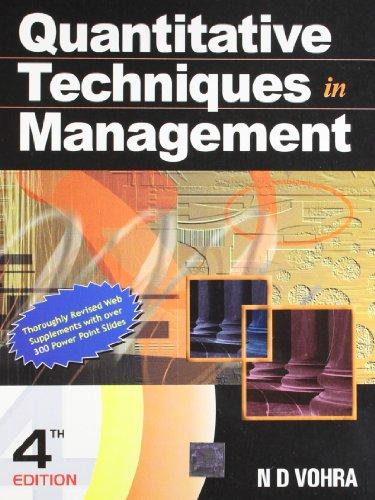3. (a) For an item, the annual demand is known to be 3,000 units which is uniformly...
Question:
3.
(a) For an item, the annual demand is known to be 3,000 units which is uniformly distributed over the year. The unit cost of the item is Rs 300 and the holding cost is 10% of the value. It costs Rs 450 to place an order for this product.
Determine
(i) the economic ordering quantity, EOQ,
(ii) the change in EOQ when the ordering cost changes to Rs 600,
(iii) the change in EOQ when the holding cost becomes 7.5% of the item value,
(iv) both, the ordering and the holding costs change as in (ii) and (iii),
(v) the per cent rise in cost associated with ordering 600 units rather than the EOQ obtained in
(i) above (using the cost figures given originally).
(b) In a certain inventory system, the EOQ is 1,200 units. If the demand for the next year increases by 50%, what will be the new EOQ? If the inventory carrying costs increase (in addition to the increase in the demand) from 25% to 40% of the value of the inventory, what will be the new EOQ?
(
c) The annual demand, buying cost per order, and carrying cost per year as a percentage of the value of inventory in the case of two products A andB are same. However, the price of A is 5 times as much as that of B. If the EOQ for A is 100 units, what will be the EOQ for B?
Step by Step Answer:







